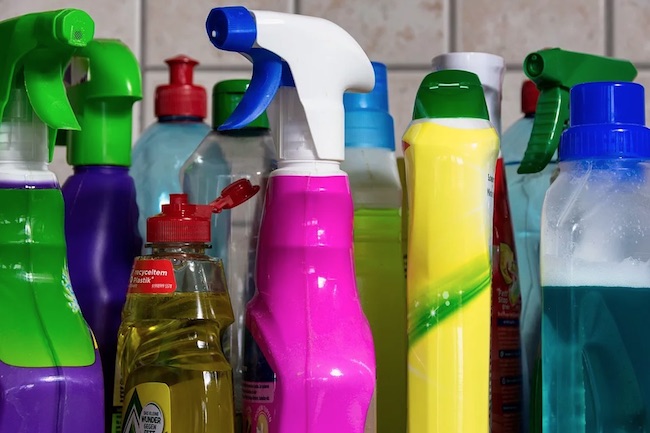What Is the Best Disinfectant for Surfaces? by Dr. Joseph Mercola for Mercola
COVID-19, the novel coronavirus identified in Wuhan City, China, in December 2019, is part of a family of viruses with a crown- or halo-like (corona) appearance.1 As explained on the Virginia Department of Health website, seven human coronaviruses have currently been identified:2
•Types 229E, NL63, OC43 and KHU1 are quite common and cause mild to moderate respiratory infections such as the common cold.
•SARS-CoV (Severe Acute Respiratory Syndrome coronavirus), discovered in China in 2002, spread to 26 countries3 before disappearing in 2003. No SARS cases have been reported since 2004, anywhere in the world. As the name implies, SARS-CoV is associated with severe respiratory illness4 and had a mortality rate of approximately 10%.5
•MERS-CoV (Middle East Respiratory Syndrome coronavirus), discovered in 2012, originated in Saudi Arabia and spread to 27 countries before being contained. Like SARS, MERS causes more severe respiratory infections than the four common coronaviruses and has a mortality rate of about 35%.6
•COVID-19 (initially called 2019-nCoV) has, since December 2019, spread to 127 countries and regions.7 While causing milder symptoms than SARS, and having a far lower mortality rate than either SARS or MERS, its infection rate appears far more accelerated.
There may be several reasons for this. According to preliminary findings, COVID-19 can remain airborne for three hours, and can survive on plastic and stainless steel surfaces for up to three days, thus facilitating its spread.8
Bioweapons expert Francis Boyle also believes COVID-19 has been weaponized with so-called “gain of function” properties that allow it to spread through the air up to 7 feet, which is greater than normal.
COVID-19 appears to affect a disproportionate number of older people; the older you are, the greater your susceptibility.9 At present, the mortality rate for COVID-19 is estimated to be between 3% and 6%.10
Due to it being an enveloped virus (meaning its single-strand RNA is enveloped in a bubble of lipid or fatty molecules), COVID-19 (as all other coronaviruses) is highly susceptible to soap and disinfectants, which is good news. Some disinfectants are more effective than others, however, which is the focus of this article.
While there are many chemical disinfectants, I’ll focus on those that are most readily available for home use. You can learn more about other disinfectants and sterilizing agents used in health care settings on the CDC’s Chemical Disinfectants for Infection Control webpage.11
Alcohol-Based Disinfectants
Alcohol-based disinfectants will contain either ethyl alcohol or isopropyl alcohol at various levels of strength (50% or greater). While alcohol primarily kills bacteria, it also has potent fungicidal and viricidal activity at concentrations above 60%.12
According to the U.S. Centers for Disease Control and Prevention,13 the microbial action of alcohol is thought to be due to its ability to denature proteins. Straight ethyl alcohol is less bactericidal than alcohol mixed with water, as the presence of water allows proteins to be denatured more rapidly.
When it comes to viruses, different alcohols are more or less effective depending on the type of virus in question.
- Ethyl alcohol — Provided the concentration is higher than 60%, ethyl alcohol effectively inactivates lipophilic viruses such as influenza viruses, coronaviruses and many (but not all) hydrophilic viruses
- Isopropyl alcohol — While killing lipid viruses such as coronavirus, isopropyl alcohol is ineffective against nonlipid enteroviruses
If using an alcohol-based disinfectant to inactivate and protect against coronaviruses on surfaces around your home, make sure it contains between 60% and 80% alcohol. According to the World Health Organization:14
“Alcohol solutions containing 60–80% alcohol are most effective, with higher concentrations being less potent. This paradox results from the fact that proteins are not denatured easily in the absence of water …”
What’s more, while alcohol-based disinfectants are highly effective against gram-positive and gram-negative bacteria, they can be more or less effective against viruses, depending on the type of virus.
They’re quite ineffective against nonenveloped (nonlipophilic) viruses, but tend to work better against enveloped viruses,15,16 which is what COVID-19 is. Keep in mind that for hand sanitation, soap and warm water is the most effective. Only use alcohol-based hand sanitizers if soap and water are unavailable.




